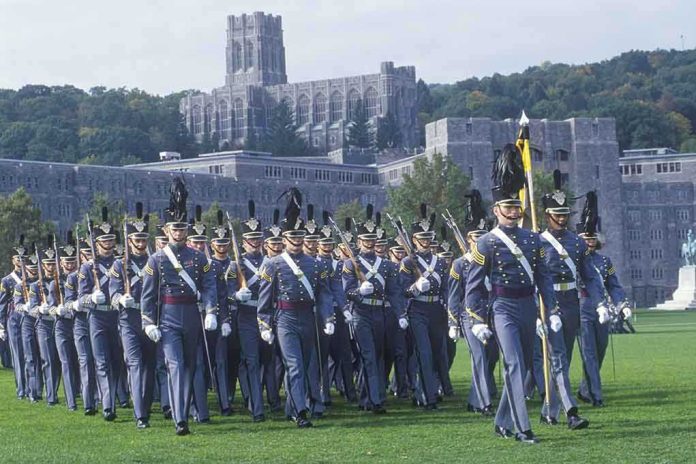
A shocking murder committed by two military cadets in a deadly love triangle still haunts families and communities decades later.
Story Overview
- Two Texas honor students and military cadets murdered a classmate in a fatal love triangle.
- The crime was fueled by jealousy, obsession, and a demand for loyalty.
- The case received national attention and remains a cautionary tale about youth violence.
- Both perpetrators were convicted and sentenced to life in prison.
- The story continues to be referenced in discussions of teen psychology and criminal justice.
Teen Cadets and a Fatal Love Triangle
In December 1995, Diane Zamora and David Graham, both honor students and military cadets, murdered their classmate Adrianne Jones in Mansfield, Texas. The murder stemmed from a fatal love triangle after Graham confessed to Zamora that he had a sexual encounter with Jones. Enraged, Zamora demanded Jones’s death as proof of Graham’s loyalty. The couple lured Jones to a remote location, where Zamora struck her with a dumbbell and Graham shot her twice. The crime shocked the community and drew national attention due to the perpetrators’ backgrounds as high-achieving youth with military ambitions.
The investigation was initially misdirected, leading to a wrongful raid before the true culprits were identified. Zamora and Graham were both respected students, and Jones was a sophomore and cross-country runner. The case stands out for its focus on teenage obsession, jealousy, and the extreme consequences of emotional manipulation among high-achieving youth.
Legal Outcomes and Lasting Impact
Zamora and Graham were arrested after Zamora confessed to fellow midshipmen at the Naval Academy. Both were convicted and sentenced to life in prison in 1997. Zamora’s appeals have been denied, and both remain incarcerated, serving life sentences without parole eligibility until 2036. The case continues to be referenced in discussions of teen violence and criminal psychology, serving as a cautionary tale about the dangers of unchecked adolescent emotions and the responsibilities of educational institutions.
The murder devastated Jones’s family and the Mansfield community. Military academies faced scrutiny over cadet conduct, and the story has been used in training and educational settings to highlight warning signs of dangerous relationships and the importance of intervention. Media coverage influenced public perceptions of military academies and youth crime, and the case remains a topic of discussion in criminology and psychology literature.
Expert Perspectives and Ongoing Reflections
Criminal psychologists emphasize the role of emotional instability and obsessive attachment in the crime. Legal experts note the importance of confessions and peer reporting in solving the case. The case is referenced as an example of “folie à deux” (shared psychosis) and the risks of unchecked adolescent emotions. Some experts argue that Graham was manipulated, while others assert both were equally culpable. The media and public remain divided on the degree of premeditation and responsibility.
The story of Adrianne Jones’s murder by Diane Zamora and David Graham stands as a tragic example of how jealousy and emotional instability can escalate to fatal violence, even among high-achieving youth. The case’s notoriety stems from the perpetrators’ backgrounds as military cadets and honor students, the sensational nature of the crime, and its enduring impact on the community and criminal justice discourse.
Sources:
Love’s Deadly Triangle: The Texas Cadet Murder
A former Naval Academy midshipman lost her appeal in a 1995 love triangle murder
Zamora trial: Shoot her, kill her
Love’s Deadly Triangle: The Texas Cadet Murder
The killer cadets: The murder of Adrienne Jessica Jones














